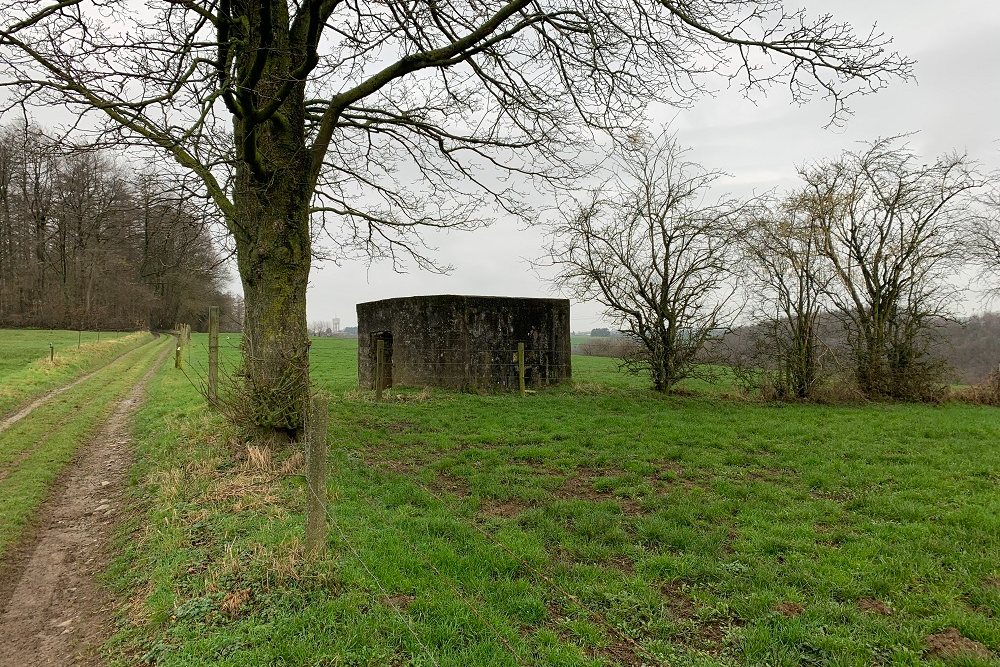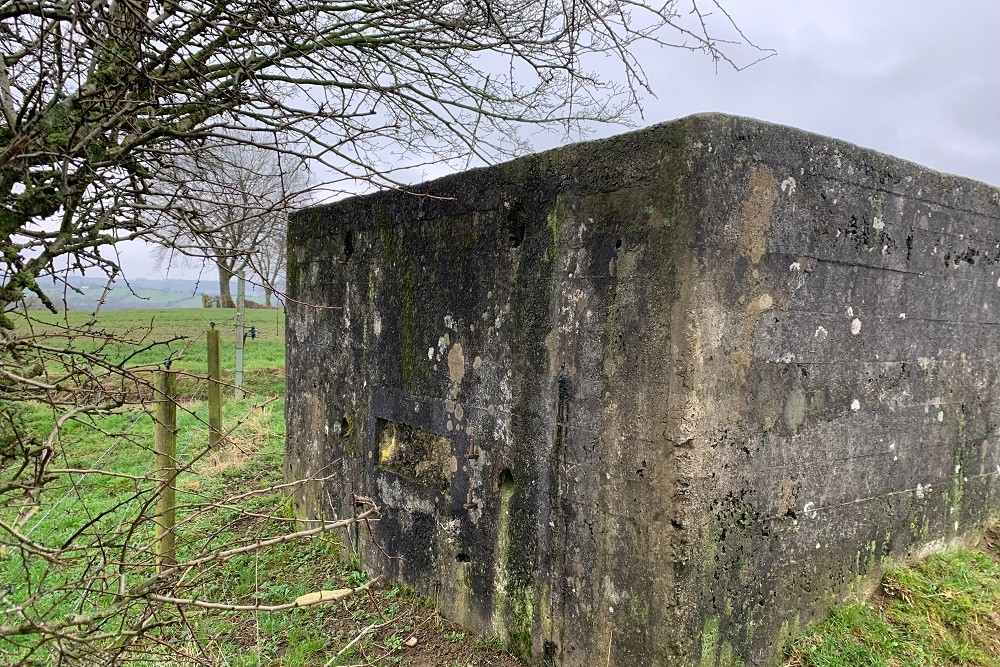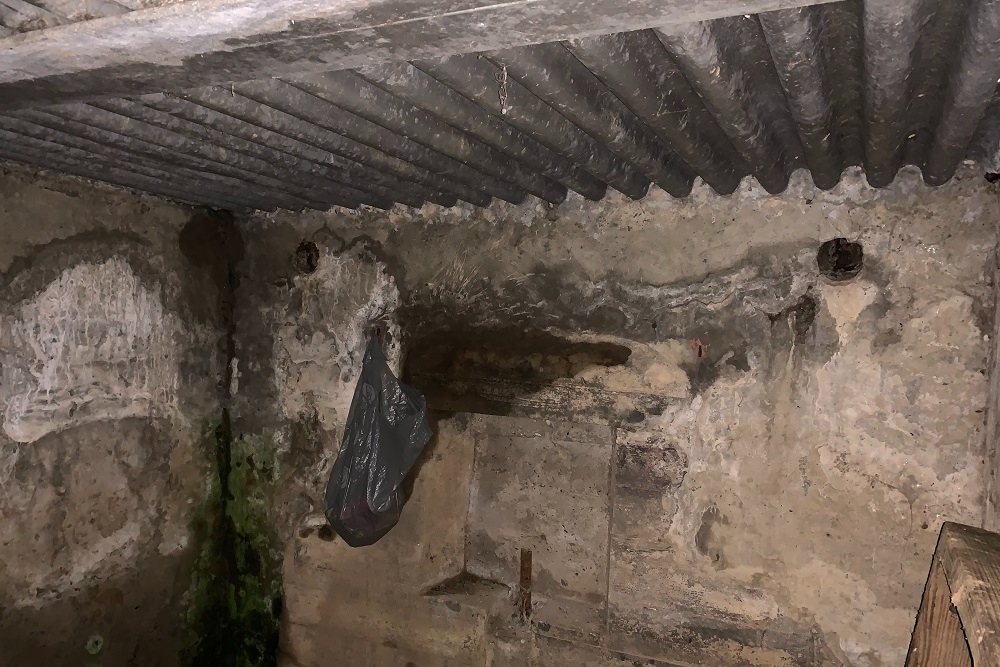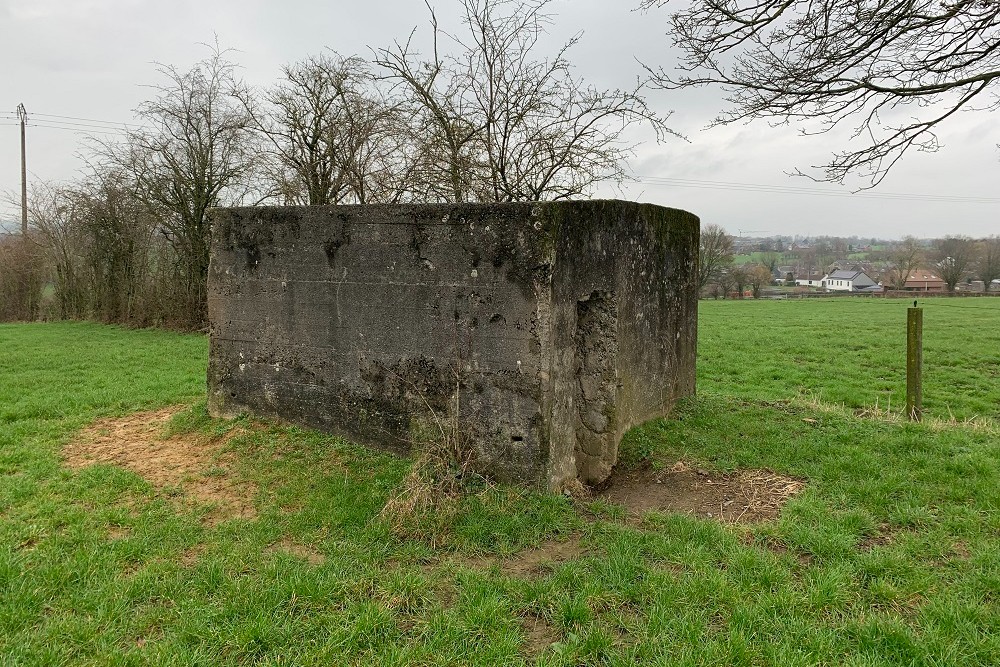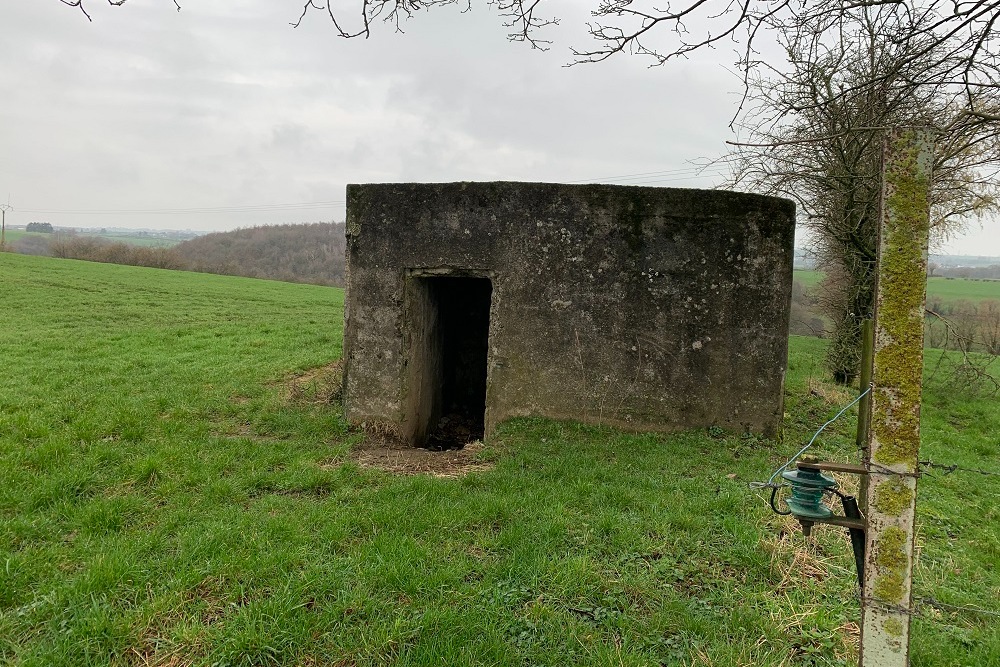Bunker K - Advanced Position Dolhain (Limbourg)
The defense lines of the city of Liege, known as "La Posistion Fortifiée de Liège" consisted of 4 lines of defense built around the cityi of Liège. It consisted out of 16 forts with numerous line bunkers in between.
In addition to these line bunkers, there were also so-called 'Position Avancées', advanced positions. These were located in Beusdael, Bilstain, Dolhain, Goé, Grunhaut, Henri-Chapelle, Hèvremont, Hockai, Hombourg, Jalhay, Limbourg, Malmedy and Stavelot.
This bunker 'K' belonged to the forward position of Dolhain (Limbourg). This position consisted of 12 bunkers, A through N. (Bunker D was never built). Located at the corner of a meadow and a forest path, the bunker guarded the northeast side of Limbourg.
The bunker is accessible. The steel door and gun shutters were sold as scrap after the war, when the bunkers had lost their strategic importance for the defense of Belgium. However, the steel pin in the artillery opening, to which the machine gun was attached, is still present. The semicircular steel arch over which the machine gun could be moved left and right is also gone. See bunker BM 2-2 at Saive, photo's 2 and 3, for an example of this arch. It is still present in this bunker.
Presumably, these small bunkers (2.5 x 2.5 m) served as observation and protection bunkers for the frontier cyclists stationed in nearby barracks of the 'Gardes Frontière'. These barracks were located, among others, in Hombourg and Henri-Chapelle.
Presumably they served as observation and protection bunkers for the frontier cyclists stationed in nearby barracks of the of the 'Gardes Frontière'. These barracks were located in Hombourg and Henri-Chapelle, among others.
The 'cyclistes frontières', frontier cyclists, who guarded the frontiers, moved by bicycle on patrol and to the surrounding bunkers in adjacent sectors.
Do you have more information about this location? Inform us!
Source
- Text: Ed Lewandowski
- Photos: Ed Lewandowski
Nearby
Museum
- Remember Museum 39-45 - Thimister-Clermont
- Fort Battice - Fortified Position Liège - Battice (Herve)
- Historical Museum d’Ensival - Verviers
Point of interest
Monument
- Resistance Memorial Bilstain - Bilstain (Limbourg)
- War Memorial Bilstain - Bilstain (Limbourg)
- Memorial First World War Bilstain - Bilstain (Limbourg)
Cemetery
- Belgian War Graves Andrimont - Andrimont
- Belgian War Graves Limbourg - Limbourg
- Belgian Graves Veterans Goé - Goé
Fortification
- Bunker J - Advanced Position Dolhain - Dolhain (Limbourg)
- Bunker C - Advanced Position Dolhain (Limbourg) - Dolhain (Limbourg)
- Bunker M - Advanced Position Dolhain (Limbourg) - Dolhain (Limbourg)
